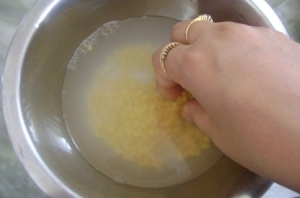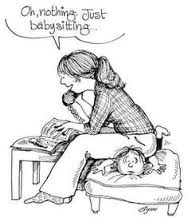
All ears! Part II: The how and the why of hearing evaluation
In the first part of this article, we saw how complex and multi layered the process of hearing is. Owing to these multiple stages and levels, it is essential for hearing tests to rule out problems at all of these levels. In an adult, one can often reduce the number of tests to one or two because the adult can verbally describe symptoms in detail, which helps the clinician narrow down to the diagnostic tests required. In a baby, however, this cannot be done. Hearing evaluation for babies would therefore, consist of a battery of tests. Those used most often are listed below.
Hearing evaluation
Behavioral testing /audiometry
The child sits in a sound treated room, and sounds of different frequencies and loudness levels are presented through speakers or headphones. Responses to these are observed and noted.
Very young babies are observed during light sleep or while feeding.
Immitance / impedance testing
This is done to rule out any problems in the middle ear. This test requires the child to sit still, and takes no more than 5-10 minutes.
BERA testing (brainstem Evoked Response Audiometry)
This requires the child to sleep for about an hour. Electrodes are placed on the child’s head at various spots, and sounds are delivered through earphones. The electrodes pick up responses at the level of the brainstem. This test is usually done to confirm or add to behavioural observation findings, and arrive at a diagnosis as to the type of hearing loss (if present).
OAE testing (Oto Acoustic Emissions)
This test is used to detect the presence and function of the outer hair cells in the cochlea. It requires the child to be asleep and takes about 10 minutes. By itself, the test gives very little information, and should be combined with findings of other tests (at least BERA and/or audiometry).
Ideally, hearing should be screened (BERA, OAE) as soon as the baby is born. Based on this performance and other history (e.g. preterm, any complications during pregnancy, syndromes, etc.), the audiologist might call the baby for a re screening every 3-6 months. This is because some hearing losses might surface later, or are progressive. If a child does not pass screening, then the battery of diagnostic tests is done to determine the further course of action.
It is extremely important for a hearing problem to be detected as early as possible. Here’s why.
Importance of early intervention
As listed in the beginning of this article, one of the primary functions of the hearing mechanism is to detect and make sense of sounds around us. Even before a baby is born, it starts detecting sounds coming from outside the womb. After birth, these sounds become more meaningful. They come from somewhere, someone, or something. This marks the beginning of comprehension and learning.
When a baby hears speech, what it actually hears is a sequence of vowels and consonants. Each of these vowels and consonants has a definite frequency and intensity (loudness or strength). If the baby has a hearing loss, even partial, some of these frequencies are not heard at all. E.g. “Give me the shoes” is heard as “_i_ me __e __U.”
Such a child will have a gross delay in learning language and therefore speaking. Worse still, he may babble for a short period and because he can’t hear the sound of his own speech, he may cease to babble. Since he cannot make sense of or reproduce any of the words being said to him, he would start to communicate mostly using gestures or pointing.
Middle ear infections are very common in young children. A child who has a middle ear infection might cry incessantly, rub his ears and refuse to suckle. Even though conductive hearing losses are partial and reversible, they can cause the child to miss out on a lot of speech inputs, if not cured in time.
While the diagnosis of a sensorineural hearing loss might be difficult for parents to come to terms with, early detection and intervention can work wonders for these children. Introduction to hearing aids or cochlear implants before 6 months of age followed by regular auditory training and speech therapy might even allow the child to develop and achieve milestones like any normal hearing child.
It is therefore, extremely important to be as alert to the child’s hearing milestones as they are to their motor and speech milestones. Here’s a useful link:
http://www.asha.org/public/speech/development/chart/
If in doubt, always consult an audiologist and get the child’s hearing tested. Maybe it was a false alarm after all… maybe our baby just did not choose to attend to our incessant banter! Still, testing would only help us be sure, and at ease. And if in case it really is a hearing loss, we would be doing the best thing that we could possibly do as parents… giving our child the gift of sound as early as we can!
Written by Pallavi Kelkar, Speech language pathologist and audiologist

 All Ears! Part I: How we hear, and when we don’t
All Ears! Part I: How we hear, and when we don’t 
 pani, it is better to give thick dal instead.
pani, it is better to give thick dal instead.






